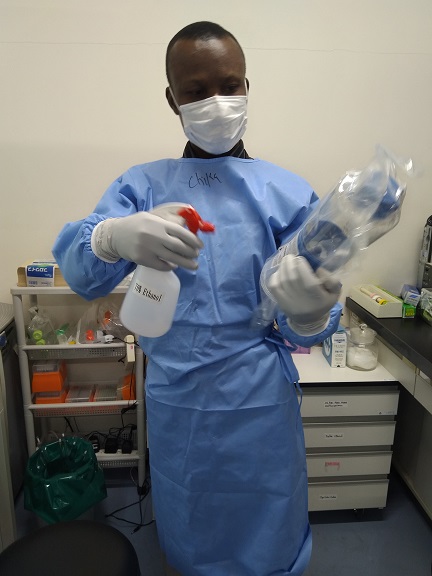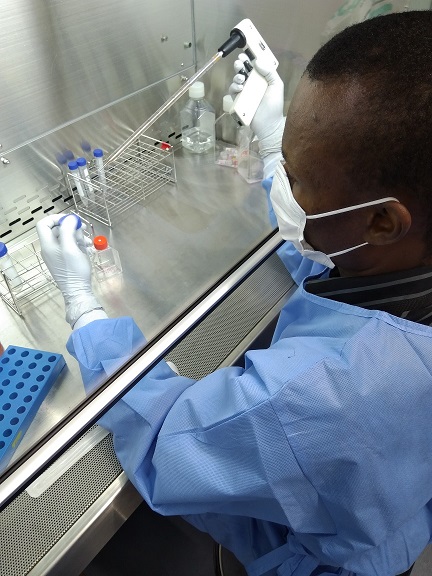Why is cell, tissue or organ culture embarked upon despite the ethical issues surrounding its development, acceptance and usage? Cell culture has application in a variety of biomedical sciences and even in the industry.
It has become one of the major tools used in the life sciences world over. Its application has greatly revolutionized the field of medicine, biotechnology and even agriculture owing to the many useful products derived from it. Cells are cultured for so many reasons. Some of these reasons are as follows:
- Cell culture is an important source of pharmaceuticals such as vaccines, proteins, antibodies, hormones and even the anti-diabetic hormone called insulin.
- It helps to study the metabolism of living cells including cells of microbes, plants and animals.
- Cell culture helps to provide evidence on the function and development of specific cells.
- It is used for the isolation and growth of cancerous cells for further studies.
- Cell culture gives a clue as to how cancerous cells develop and spread.
- It can be used for the screening of putative drugs in the pharmaceutical industry during novel drug development.
- It is a tool for investigating the numerous processes relating to human health and diseases.
- Cell culture is used to test new products including drugs, cosmetics, vaccines and other pharmaceuticals for toxicity.
Cytotoxicity is the cellular damage of metabolic pathways, structures and intracellular processes of a living organism which ultimately result in the loss of function or impaired metabolic function. In some cases, cytotoxicity may lead to the loss of viability of the lining cells or tissues.
Most in vitro experimentations (particularly cell culture techniques) are mainly aimed at determining the probable toxicity or cytotoxicity of substances (e.g. drugs, cosmetics and vaccines) that is being tested using cell culture techniques.
And because these tested materials or substances are used in vivo by living organisms (inclusive of humans) for treatment and other beneficial purposes, it is critical that they are certified safe to the host’s body and thus portend no danger or toxicity when used.
Cytotoxicity testing is used to determine the level of toxicity of a substance at the cellular level either in vivo or in vitro. It can be carried out in vivo (i.e. in laboratory animals) or in vitro (as is applicable with cell culture). Cytotoxicity testing is crucial for the testing of products such as drugs and vaccines as before they are released into the market for public consumption.
References
Alberts B, Bray D, Johnson A, Lewis J, Raff M, Roberts K andWalter P (1998). Essential Cell Biology: An Introduction to the Molecular Biology of the Cell. Third edition. Garland Publishing Inc., New York.
Alberts B, Bray D, Lewis J, Raff M, Roberts K and Watson J.D (2002). The molecular Biology of the Cell. Fourth edition. New York, Garland, USA.
Ausubel, F.M., Brent, R., Kingston, R.E., Moore, D.D., Seidman, J.G., Smith, J.A., Struhl, K., eds (2002). Short Protocols in Molecular Biology, 5th edn. John Wiley & Sons, New York.
Caputo J.L (1996). Safety Procedures. In: Freshney, R.I., Freshney, M.G., eds., Culture of Immortalized Cells. New York, Wiley-Liss, Pp. 25-51.
Cooper G.M and Hausman R.E (2004). The cell: A Molecular Approach. Third edition. ASM Press.
Davis J.M (2002). Basic Cell Culture, A Practical Approach. Oxford University Press, Oxford, UK.
Freshney R.I (2005). Culture of Animal Cells, a Manual of Basic Technique, 5th Ed. Hoboken NJ, John Wiley and Sons Publishers.
Health Services Advisory Committee (HSAC) (2003). Safe Working and the Prevention of Infection in Clinical Laboratories. HSE Books: Sudbury
Lodish H, Berk A, Matsudaira P, Kaiser C.A, Kreiger M, Scott M.P, Zipursky S.L and Darnell J (2004). Molecular Cell Biology. Fifth edition. Scientific American Books, Freeman, New York, USA.
Marcovic O and Marcovic N (1998). Cell cross-contamination in cell cultures: the silent and neglected danger. In Vitro Cell Dev Biol. 34:108.
Mather J and Barnes D (1998). Animal cell culture methods, Methods in cell biology. 2rd eds, Academic press, San Diego.
Verma P.S and Agarwal V.K (2011). Cytology: Cell Biology and Molecular Biology. Fourth edition. S. Chand and Company Ltd, Ram Nagar, New Delhi, India.
Discover more from Microbiology Class
Subscribe to get the latest posts sent to your email.





